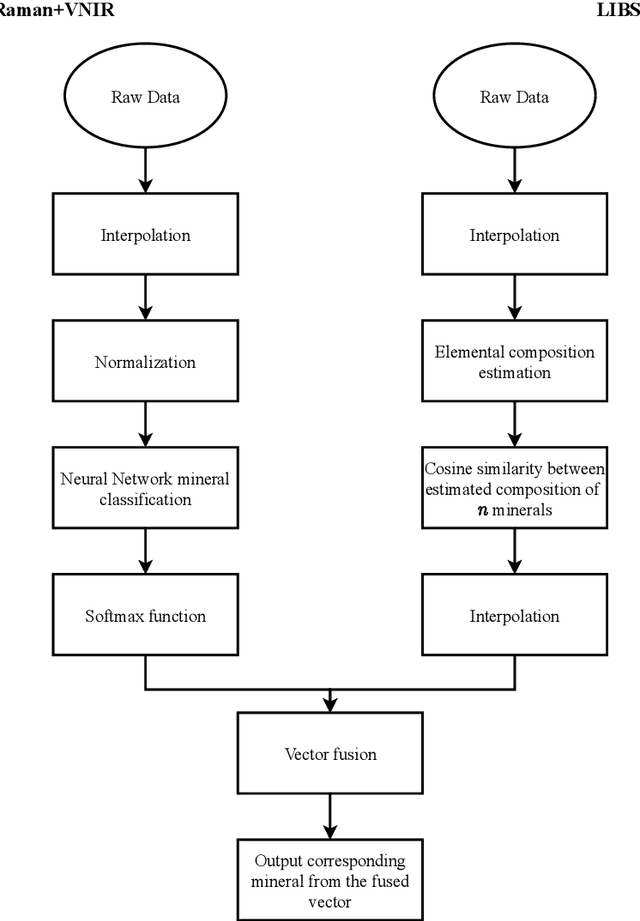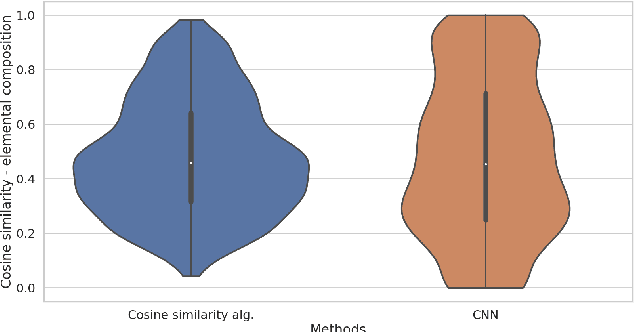Igor Drozdovskiy
Insights into Lunar Mineralogy: An Unsupervised Approach for Clustering of the Moon Mineral Mapper (M3) spectral data
Nov 05, 2024Abstract:This paper presents a novel method for mapping spectral features of the Moon using machine learning-based clustering of hyperspectral data from the Moon Mineral Mapper (M3) imaging spectrometer. The method uses a convolutional variational autoencoder to reduce the dimensionality of the spectral data and extract features of the spectra. Then, a k-means algorithm is applied to cluster the latent variables into five distinct groups, corresponding to dominant spectral features, which are related to the mineral composition of the Moon's surface. The resulting global spectral cluster map shows the distribution of the five clusters on the Moon, which consist of a mixture of, among others, plagioclase, pyroxene, olivine, and Fe-bearing minerals across the Moon's surface. The clusters are compared to the mineral maps from the Kaguya mission, which showed that the locations of the clusters overlap with the locations of high wt% of minerals such as plagioclase, clinopyroxene, and olivine. The paper demonstrates the usefulness of unbiased unsupervised learning for lunar mineral exploration and provides a comprehensive analysis of lunar mineralogy.
Machine Learning for recognition of minerals from multispectral data
May 28, 2020



Abstract:Machine Learning (ML) has found several applications in spectroscopy, including being used to recognise minerals and estimate elemental composition. In this work, we present novel methods for automatic mineral identification based on combining data from different spectroscopic methods. We evaluate combining data from three spectroscopic methods: vibrational Raman scattering, reflective Visible-Near Infrared (VNIR), and Laser-Induced Breakdown Spectroscopy (LIBS). These methods were paired into Raman + VNIR, Raman + LIBS and VNIR + LIBS, and different methods of data fusion applied to each pair to classify minerals. The methods presented here are shown to outperform the use of a single data source by a significant margin. Additionally, we present a Deep Learning algorithm for mineral classification from Raman spectra that outperforms previous state-of-the-art methods. Our approach was tested on various open access experimental Raman (RRUFF) and VNIR (USGS, Relab, ECOSTRESS), as well as synthetic LIBS NIST spectral libraries. Our cross-validation tests show that multi-method spectroscopy paired with ML paves the way towards rapid and accurate characterization of rocks and minerals.
 Add to Chrome
Add to Chrome Add to Firefox
Add to Firefox Add to Edge
Add to Edge